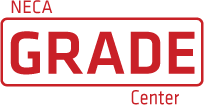- About NECA
About NECA
NECA, a public agency devoted to the improvement of national health and future of healthcare - What we do
What we do
NECA, a public agency devoted to the improvement of national health and future of healthcare - Publication
Publication
NECA, a public agency devoted to the improvement of national health and future of healthcare - International Cooperation
International Cooperation
NECA, a public agency devoted to the improvement of national health and future of healthcare - NECA GRADE Center
NECA GRADE Center
NECA, a public agency devoted to the improvement of national health and future of healthcare
Healthcare Research Reports
| SUBJECT |
PUBLISH
Management and improvement in cancer pain: focusing on narcotic analgesics |
|---|---|
| PUBLISH DATE | 2012.12.31 |
| FILE |
 Issuepaper_Management and Improvement in Cancer Pain_Focusing on Narcotic Analgesics.pdf Issuepaper_Management and Improvement in Cancer Pain_Focusing on Narcotic Analgesics.pdf
 [Executive Summary] Management and Improvement in Cancer Pain_Focusing on Narcotic Analgesics.pdf [Executive Summary] Management and Improvement in Cancer Pain_Focusing on Narcotic Analgesics.pdf
|
Summary
Pain is one of the most common and painful symptoms in the cancer patients. Approximately 30~50% of patients with early-stage cancer or patients who received aggressive anticancer treatment suffer from cancer pain. Also about 60~70% of patients with progressive stage of cancer and 80~90% of patients with end-stage cancer are suffering from cancer pain. In order to control such cancer pain, it is necessary to select or add analgesics depending on the intensity of cancer pain, referring to the World Health Organization(WHO)-recommended 3 step analgesic ladder. For example, use non-narcotic analgesics for mild pain, weak narcotic analgesics for persistent pain and then, potent narcotic analgesics such as Morphine until a patient’s pain disappears. Also regardless of pain intensity, adjuvant analgesics should be used in combination by pain type to potentiate the analgesic effects. In addition, to cope with suddenly occurring breakthrough pain, short-acting analgesics should be prescribed in advance to be used in case of breakthrough pain. Additionally, patients should be provided with knowledge on pain control methods and analgesics use, and education and instruction on pain assessment and expression methods to ensure effective cancer pain control. If pain of cancer patients can be appropriately controlled according to the guideline, unnecessary hospitalization and ER visits will be reduced, resulting in improved quality of life of patients and efficient use of medical expenses; however, a number of obstacles exist for cancer pain control in real practice. This study aimed to provide the rationale for policy setting by conducting the following studies, referring to the framework in the Evidence-Practice gaps report by the Australian National Institute of Clinical Studies(NICS). First, the status of cancer pain management was reviewed by claims data analysis and a questionnaire survey of physicians, the gap between status and rationale was identified, causes of the gap was investigated with the focus group interview of representative experts, and then the recommendations for improvement were presented. Among the recommendations for improvement, the effect of patient education was also confirmed by a systemic literature review and patient questionnaire survey. |
Reference Data
| Journal Publication |
|
|---|
Copyright
|
Creative Commons License  · CC BY-NC-ND
· CC BY-NC-ND
|
Korea Open Government License  · BY
· BY· NC · SA |
|
Contact Us Report & Quote. - Report : +82-2-2174-2883 - Quote : +82-2-2174-2787 |
|
| Prev | Safe and Efficient Use of Radiotherapy Equipment from the Health Care Perspectives |
|---|---|
| Next | Cost-effectiveness of human papillomavirus vaccination in South Korea |

















